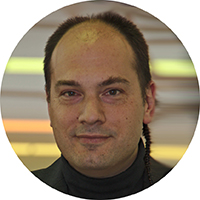Seminar Schedule
Find upcoming seminars below. All talks are also announced via our mailing list and are also available via a google calendar (ical). Previous talks as well as a copy of the slides will be made available for the foreseeable future on the VIDEOS page.
Thu 2022-12-08 17:00 CET
Quantum Science Seminar #69: Relativistic Quantum Mechanics
Philipps-Universität Marburg
Marburg — Germany
Marburg — Germany
Relativistic effects and their role in chirality and fundamental physics
This lecture shall serve two main purposes: Firstly, it shall
provide an overview of special relativity and various
relativistic electronic structure approaches. Secondly, it shall
highlight the crucial role of relativistic effects in the
description of molecular chirality and in fundamental physics
research. Most importantly, the search for a violation of
discrete symmetries like parity and time-reversal symmetry can
benefit from large relativistic enhancement factors that can be
taken advantage of with specifically tailored molecules
containing heavy nuclei.
References
-
Chiral Molecules as Sensitive Probes for Direct Detection of P-Odd Cosmic FieldsPhysical Review Letters1251230042020
-
Parity violationWIREs Computational Molecular Science9e13962019
-
Density functional calculations of molecular parity-violating effects within the zeroth-order regular approximationThe Journal of Chemical Physics1221343162005
